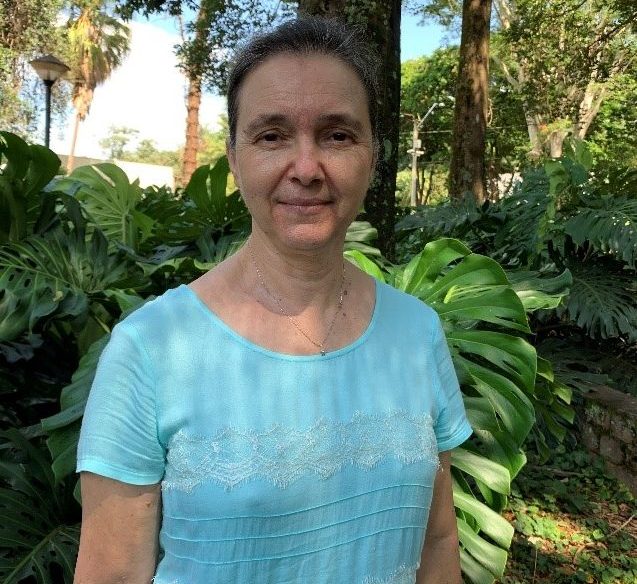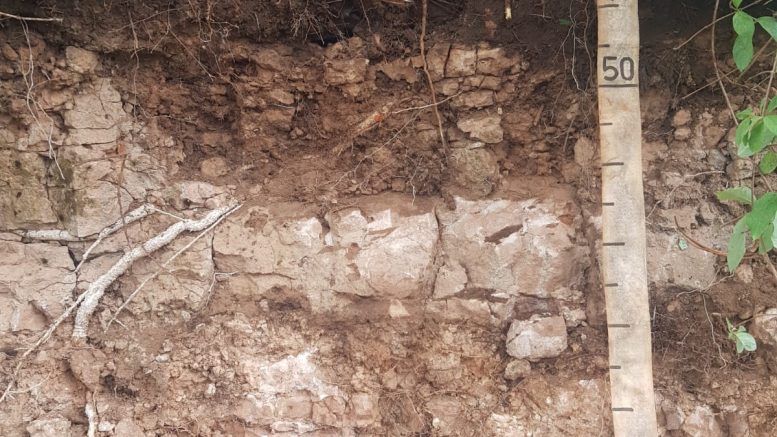“… with updated fertilization tables, precision in the fertilization recommendation increases and agriculture, which feeds and warms us, gains efficiency and competitiveness …“
Mara Cristina Pessôa da Cruz is an agronomist with a master’s degree in plant production and a PhD in analytical chemistry from São Paulo State University (Unesp), campus of Jaboticabal. Pessôa da Cruz is a soil fertility professor and responsible for the Soil Fertility Laboratory at Unesp.

Mara Cristina Pessôa da Cruz, professor of soil fertility at Unesp
Soil chemical analysis is the most efficient tool for evaluating soil fertility and for the recommendation of liming and fertilization. This scenario will persist for decades, despite attempts of innovation, because the soil analysis systems that coexist in Brazil are demonstrably more efficient than the tools that technological advances have made available so far.
With some regional adaptations and some combination between systems, inside soil analysis laboratories in Brazil, methods developed by Embrapa (Brazilian Agricultural Research Corporation) or IAC (Agronomical Institute of Campinas) are the ones used for soil analysis. The most important differences between the systems are in the measurement of P availability, total soil acidity (H+Al) and the micronutrients Cu, Fe, Mn and Zn. In the Embrapa system, P and micronutrients are evaluated with an acid extractor, and total acidity is determined with a calcium acetate buffered solution; in the IAC system, P is evaluated with an ion exchange resin, total acidity is evaluated with SMP buffer solution, and micronutrients with DTPA (diethylenetriaminepentaacetic acid) solution. The resin and DTPA methods have advantages over the acid extractor, in particular because they are sensitive to detecting effects of acidity (and acidity correction) on nutrient availability.
Regardless of the analysis system, what is sought regarding plant nutrients is the assessment of availability, that is, the fraction of nutrients that are in the soil and that will be made available during the cultivation cycle. The complexity involved is much greater than it seems, because different soils and cultivated species are unique. Still, some scenarios lead to changes in the nutrient sources used in fertilization, such as the recent partial replacement of potassium chloride by less soluble sources. In this context, usage of the acid extractor is no longer recommended and extraction with ammonium chloride solution becomes the most indicated. However, if there is a ready-made solution for the case of K, there is not one for all new situations that arise as agriculture advances. Exactly for this reason, for some nutrients the research should be continuous, but it is not. In recent years, N, which is not evaluated in soil chemical analysis, has been the only object of research on methods of availability assessment.
Research with soil analysis practically stopped happening in Brazil for three main reasons: (I) resignation in front of two established systems and with fertilization tables built for the main cultivated plants; (II) lack of research funding that gives soil analysis the relevance it deserves as a basis for sustaining state fertilization programs; (III) lack of funding and lack of appreciation for field research that allows the construction and updating of fertilization tables. With updated fertilization tables, precision in the fertilization recommendation increases and agriculture, which feeds and warms us, gains accuracy and competitiveness.
Notes:
Cu: Copper; Fe: Iron; Mn: Manganese; Zn: Zinc; N: Nitrogen; K: Potassium; H: Hydrogen; Al: Aluminum; P: Phosphorus;
READ MORE:

